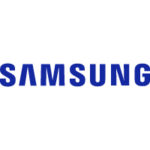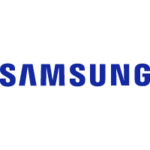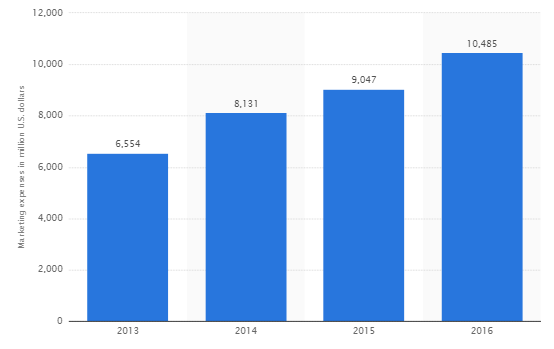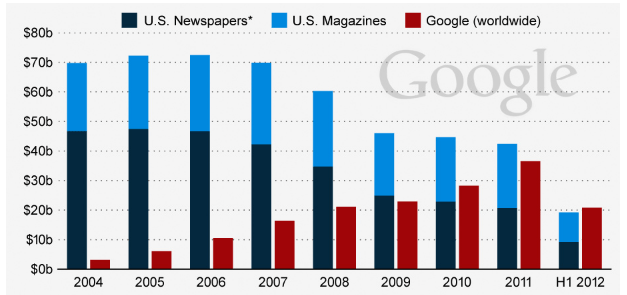Marketing

Samsung segmentation, targeting and positioning involves a set of activities performed in a sequence. These activities constitute the essence of Samsung marketing strategy. Segmentation involves dividing population into different groups on the basis of their common characteristics. Targeting is associated with selecting specific group(s) as consumers of products and services. Lastly, positioning refers to the selection of the marketing mix the most suitable for the target customer segment. Samsung uses the following types of positioning: Multi-segment positioning. Samsung targets more than one segments at the same time through offering several packages of products and services. For example, there are several variations of Samsung SMART Signage professional displays with different sizes, screen resolutions and functionalities and ultimately with different price tags. Thus, Samsung appeals to the needs and wants of consumers with varying financial capabilities. Imitative positioning. Samsung is known to imitative its main competitor Apple in product in design, functionalities, as well, as marketing strategy. Anticipatory positioning. Certain Samsung products such as mobile image sensors currently have low turnover. However, these product have been developed with the anticipation that the turnover will increase in the future. The following table illustrates Samsung segmentation, targeting and positioning: Type of segmentation Segmen-tation criteria Samsung target customer segment Samsung IT & Mobile Communications Samsung Consumer Electronics Samsung Device Solutions Geog-raphic Region 80 countries worldwide 80 countries worldwide 80 countries worldwide Density Urban/rural Urban/rural Urban/rural Demo-graphic Age 18-65 25-65 25-60 Gender Males & Females Males & Females Males & Females Life-cycle stage Bachelor Stage Newly Married Couples Full Nest I Full Nest II Full Nest III Empty Nest I Empty Nest II Solitary Survivor I Solitary Survivor II Bachelor Stage Newly Married Couples Full Nest I Full Nest II Full Nest III Empty Nest I Empty Nest II Bachelor Stage Newly Married…

Samsung marketing mix (Samsung 7Ps of marketing) comprises elements of the marketing mix that consists of product, place, price, promotion, process, people and physical evidence. Product Samsung Electronics products are designed in 6 global design centres and manufactured in 53 global production bases. There are 34 R&D centres worldwide that engage in new product development. As illustrated in table below, Samsung products can be divided into three divisions and there are more than one product categories under each division. Product division Product categories Consumer electronics Visual display business Digital appliances business Printing solutions business Health and medical equipments business IT & Mobile Communications Networks business Mobile communications business Device solutions Memory business System LSI business Samsung product divisions and categories Samsung products have won a number of awards and recognitions such as Best Product Award in 8 categories by BLI Summer Pick Award and Gold Award in Design by iF Design in 2015. Place. There are 53 Samsung international sales bases and the multinational electronics company uses the following sales channels: Sales and service dealers. This sales channel is associated with corporate sales. Modern retail outlets owned by the company. These are highly attractive stores with customer service representatives, as well as, employees known as Galaxy Consultants. In 2015, there were Galaxy Consultants at 158 stores under Samsung’s direct management in Korea.[1] The company has plans to expand Galaxy Consultants program beyond Korea. Distributors. Samsung has regional, territory and country distributors. Depending on the territory, size and experience of distributors, Samsung can grant distributorship rights of a single product category or all Samsung products. Online sales. Customers can choose and order Samsung products through official website of the company. Price Samsung pricing strategy can be described as the combination of the following pricing strategies depending on the product range, the…

Samsung’s has the largest marketing budget in the competition and this fact partially explains the leadership position of the business in terms of market share. Samsung spent a total of USD10.2 billion (11.5 trillion won) on marketing in 2016 alone. This included USD3.9 billion (4.4 trillion won) toward advertisements, a 15% increase from 2015[1]. Samsung marketing strategy integrates various forms of advertising, events and experiences, public relations, direct marketing and personal selling as discussed further below in more details. The multinational electronics company has 53 global sales bases worldwide. Samsung marketing strategy is based on the following principles: Samsung 7ps of marketing places greater emphasis on product element of the marketing mix, compared to other elements such as process, people and physical evidence. Specifically, with 34 R&D centres worldwide and 53 global production bases, the multinational electronics company attempts to ensure the continuous pipeline of new products with innovative features and capabilities. Samsung segmentation targeting and positioning strategy integrates multi-segment, imitative and anticipatory positioning techniques. Samsung marketing communications strategy, as it is illustrated in figure below, comprises two steps and each step involves a set of separate activities. It has to be noted that legal review as an important element of marketing communication process is present in both steps – production and execution. This is because neglecting legal implications associated with the development and delivery of marketing communication messages can cause considerable damage to the brand image with severe financial implications. Samsung Electronics marketing communication process[2 Samsung Group Report contains a full analysis of Samsung marketing strategy. The report illustrates the application of the major analytical strategic frameworks in business studies such as SWOT, PESTEL, Porter’s Five Forces, Value Chain analysis and McKinsey 7S Model on Samsung. Moreover, the report contains analyses of Samsung leadership, organizational structure and…

Alphabet (Google) marketing strategy integrates various online and offline marketing techniques. Alphabet’s marketing budgets and efforts mainly focus on main business – Google. It has been noted that “though you’ll never see an ad for the king of the search engines, this query behemoth employs some of the most subtle, yet fantastically impressive marketing strategies out there”[1] Beyond Google, Alphabet Inc. does not invest much resources and efforts to advertise its other projects such as Access, Calico, CapitalG, GV, Nest, Verily, Waymo, and X. This is because most of these projects are only on the stage of research and development and they do not have products and services ready to offer to the market. As it is illustrated in Figure 4 below, total annual marketing spending of the company has been consistently increasing during the past several years. Out of these amounts, for the years ended December 31, 2014, 2015 and 2016, advertising and promotional expenses totalled approximately USD3,004 million, USD3,186 million, and USD3,868 million, respectively[2]. Annual Alphabet Inc. (Google) marketing spending[3] Google marketing strategy is based on the following principles: Within the framework of marketing mix, focusing on product element to a greater extent compared to other elements. The majority of Alphabet products and services are innovative in their nature or they add innovative features to existing products and services. Targeting the broadest customer segment with multiple products and services. The company’s core business, Google offers a wide range of products and services such as Search, Android, Maps, Chrome, YouTube, Google Play, and Gmail that are used by billions of people every day worldwide. Using several elements of marketing communications mix in an integrated manner. Specifically, the internet giant uses sales promotion, events and experiences, public relations and direct marketing tools to company to communicate its marketing message to…

Google marketing communication mix explains the ways in which advertising, sales promotion, events and experiences, public relations and direct marketing tools are used by the company to communicate its marketing message to the target customer segment. Advertising Google emerged as a popular alternative for traditional print and media advertising and changed advertising industry worldwide to a great extent. As it is illustrated in figure below, by 2012 Google was generating more advertising revenues than print media in the US as a whole. The significance and market share of Google in the global advertising industry has increased even to a greater extent during the past five years, since 2012. Accordingly, owning a more significant advertising platform than print and media advertising, Google does not use traditional print and media advertising to communicate its marketing message to the target customer segment. Revenues by print media in the US and Google (worldwide)[1] Sales Promotion Sales promotion refers to the “stimulation of sales achieved through contests, demonstrations, discounts, exhibitions or trade shows, games, giveaways, point-of-sales displays and merchandising, special offers and similar activities”[2]. Google employs sales promotion marketing techniques rarely. The most noteworthy case relates to one day sales promotion of Google Glass via online purchase for USD1,500[3] and the promotion of Android 4.4 in cooperation with candy bar KitKat, owned by Nestle International Travel Retail. Up to date Google does not use popular sales promotions techniques such as seasonal sales promotions, money off coupons, competitions, discount vouchers, free gifts or loyalty cards… Alphabet Inc. (Google) Report contains a full analysis of Google marketing communication mix and Google marketing strategy in general. The report illustrates the application of the major analytical strategic frameworks in business studies such as SWOT, PESTEL, Porter’s Five Forces, Value Chain analysis and McKinsey 7S Model on Google. Moreover, the report…

Alphabet (Google) segmentation, targeting and positioning efforts can be explained as the essence of company’s marketing efforts. Segmentation divides population into groups on the basis of specific characteristics. Targeting refers to choosing certain groups identified as a result of segmentation to sell products and services. Lastly, positioning refers to the selection of the marketing mix the most suitable for the target customer segment. Google uses the following types of positioning: Multi-segment positioning. The company offers a wide range of products and services such as Search, Android, Maps, Chrome, YouTube, Google Play, and Gmail that target multiple customer segments Standby positioning. Certain products within Alphabet portfolio such as robotics, Waymo self-driving cars, Lunar XPRIZE space exploration program, 3D mapping and others may not have a clear target customer segment at this stage. Nevertheless, these products and projects are awaiting changes in the market for the demand to emerge. Imitative positioning. Google has used imitative positioning in a few instances. The launch of Chrome browser to imitate then-market leader Internet Explorer and the launch of G+ social networking site to imitate Facebook can be mentioned to illustrate this point. The following table illustrates Google segmentation, targeting and positioning: Type of segmentation Segmentation criteria Google target customer segment Geographic Region Global scale Density Urban and rural Demographic Age Anyone older than 12 years old Gender Males & Females Life-cycle stage Bachelor Stage young, single people not living at home Newly Married Couples young, no children Full Nest I youngest child under six Full Nest II youngest child six or over Full Nest III older married couples with dependent children Empty Nest I older married couples, no children living with them Empty Nest II older married couples, retired, no children living at home Solitary Survivor I in labour force Solitary Survivor II retired…

Alphabet (Google) marketing mix, also referred to as Alphabet (Google) 7Ps of marketing comprises elements of the marketing mix that consists of product, place, price, promotion, process, people and physical evidence. Product. Alphabet Inc. is a holding company and its portfolio comprises nine companies. Products and services offered by these companies are illustrated in table below: Company Products and services Google Search, Android, Maps, Chrome, YouTube, Google Play, and Gmail Waymo Self-driving cars Verily Miniaturized CGM, Smart Lens Program, Debug, Retinal Imaging etc. Calico Research and development projects focused on ageing Nest Indoor and outdoor cameras, learning thermostats, and smoke alarms Access High-speed fiber internet access across the U.S X Projects associated with “moonshot” technologies Capital G Equity investment fund GV Venture capital Companies in Alphabet portfolio and products and services offered by them It is important to note that although Alphabet product portfolio is vast and diverse, Google remains as its core business accounting for 88% of total revenues in 2016 through advertising[1] Place. Being an e-commerce and internet company, Google relies on online sales channel for the sales of its products and services. In 2015 the company opened its first physical store and up to date, there are only a few Google physical stores in various formats in North America and the UK. Google’s first physical store in London, is a “shop in a shop” located inside the Currys PC World store on Tottenham Court. “In addition to showcasing Google merchandise—Chromebooks, Chromecasts, Android phones, and so on—the space includes a “Doodle Wall” for customers to scribble on with digital spray paint, a “Chromecast Pod” for movie viewing, and a “Portal” for touring the planet via Google Earth.”[2] It has to be noted that place element of the marketing mix does not relate to certain companies belonging to Alphabet portfolio…

Facebook Inc. segmentation, targeting and positioning comprises a set of activities directed at identifying specific groups among the population as potential customers (site users) and developing products and services according to the needs and wants of this specific group. Segmentation involves dividing population into groups according to certain characteristics, whereas targeting implies choosing specific groups identified as a result of segmentation to sell products to. Since its launch in 2004 as a social networking site exclusively for Harvard students, Facebook’s target customer segment has been consistently expanding. Nowadays, the social media giant targets a wide range of customers aged from 13 years old and older. Positioning refers to the selection of the marketing mix the most suitable for the target customer segment. Facebook uses multi-segment type of positioning and accordingly, it targets multiple customer segments at the same time with different social media platforms. For example, Facebook social media site targets individuals interested in a full range of social media services such as pages, news feed events etc., whereas Instagram targets customer segment who are interested exclusively on photo sharing. Facebook Inc. also uses adaptive positioning strategy across its brands, repositioning products and services according to changes in preferences of the target customer segment. The following table 2 illustrates Facebook segmentation, targeting and positioning: Type of segmentation Segmentation criteria Facebook Inc. target customer segment Facebook Messenger Instagram What’s Up Oculus Geographic Region International International International International International Density Urban & rural Urban & rural Urban & rural Urban & rural Urban Demographic Age 13 and upwards 13 and upwards 13 – 40 16 – 45 13 – 40 Gender Males & Females Males & Females Males & Females Males & Females Males & Females Life-cycle stage Bachelor Stage Newly Married Couples Full Nest I Full Nest II Full Nest…

Facebook Inc. marketing communication mix is associated with the integration of individual elements of marketing mix into the marketing strategy of the social media company. Elements of the marketing communication mix include print and media advertising, sales promotions, events and experiences, public relations, direct marketing and personal selling. Advertising Being a popular e-commerce company, Facebook Inc. also occasionally advertises itself via traditional media such as billboards and television. In the UK, the company has already invested more than GBP 6m in advertising through traditional media in 2015, compared to a meager GBP 16,000 spent by the company in the previous year.[1] Moreover, Facebook traditional media advertisements in the UK included major TV channels and The London Underground. Nevertheless, viral marketing remains to be the main advertising technique extensively utilized by Facebook. Recently, the company launched a massive ad campaign for Facebook Live, placing user videos at the core of the campaign.[2] The social media giant also runs its own advertisements on Facebook. Generally, For 2015, 2014, and 2013, advertising accounted for 95%, 92% and 89%, respectively, of the company’s revenue.[3] Sales Promotion The list of the most popular sales promotions techniques used by many businesses around the globe include money off coupons, competitions, discount vouchers, free gifts, point of sales materials, loyalty cards and others. Up to date, Facebook has not used any of these sales promotions techniques in order to increase the sales of its Facebook Ads. Instead, the social media company chooses to concentrate on increasing the level of customization of its advertising service reflecting the unique aspects of each business that wants to advertise on Facebook in terms of target customer segment, advertising budget, duration of advertisement campaign and others… Facebook Inc. Report contains more detailed discussion of Facebook Inc. marketing communication mix and marketing strategy.…

Facebook Inc. 7Ps of marketing mix explains the role of seven important elements of the marketing mix in achieving the primary objective of the business, i.e. profit maximization. These seven elements are product, place, price, promotion, process, people and physical evidence. Product. Facebook Inc. product portfolio includes the following: Facebook. A website and mobile application that enables users to connect, share, discover, and communicate with each other on mobile devices and personal computers. Instagram. A mobile application that enables people to take photos or videos, customize them with filter effects, and share them with friends and followers in a photo feed or send them directly to friends. Messenger. A messaging application available for mobile and web on a variety of platforms and devices. WhatsApp. A fast, simple and reliable mobile messaging application that is used by people around the world and is available on a variety of mobile platforms. Oculus. Oculus virtual reality technology and content platform power products that allow people to enter a completely immersive and interactive environment to play games, consume content, and connect with others. Except Oculus virtual reality gears, all of the products offered by Facebook Inc. are intangible in nature and they are upgraded by the company in a regular basis and the use of Facebook products and services requires minimum IT skills. Place. Facebook Inc. is an e-commerce business without physical stores and physical customer service offices. An access to Facebook products and services are subject to the following three conditions: Access to a desktop computer, laptop, tablet or a smartphone Access to internet via desktop computer, laptop, tablet or a smartphone Being located in a country where Facebook is not banned. There are few countries such as China, Iran, and North Korea, where access to Facebook is restricted due to political reasons.…
